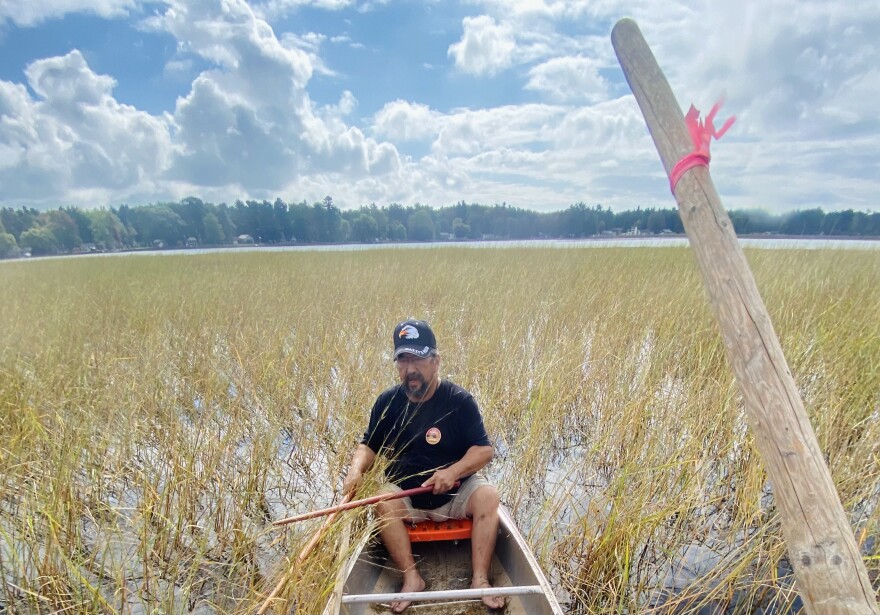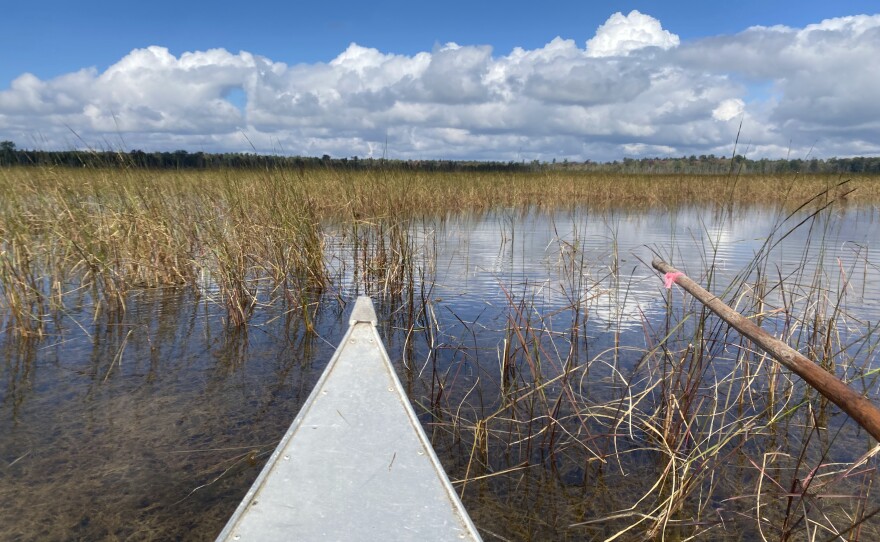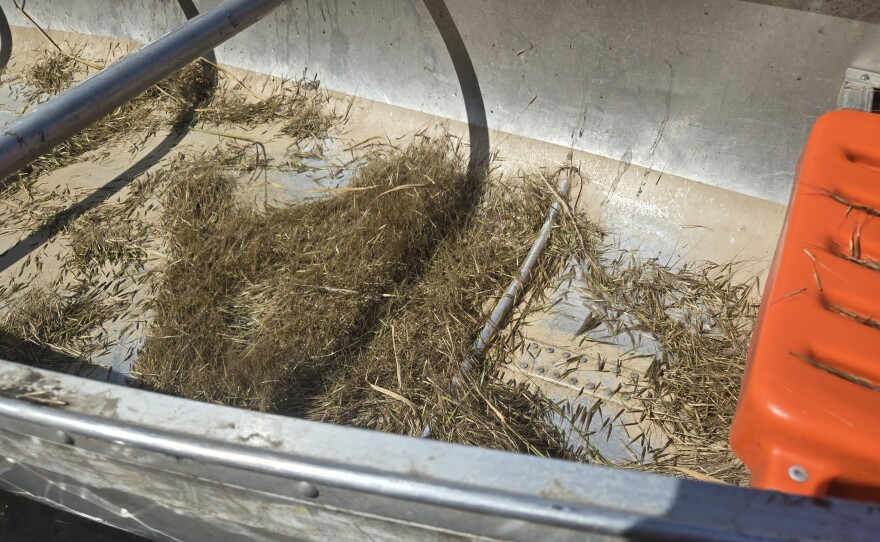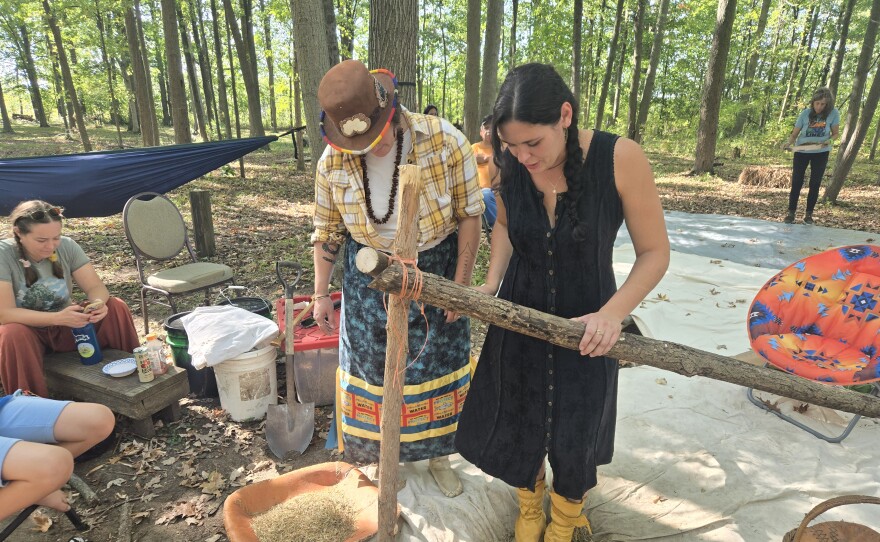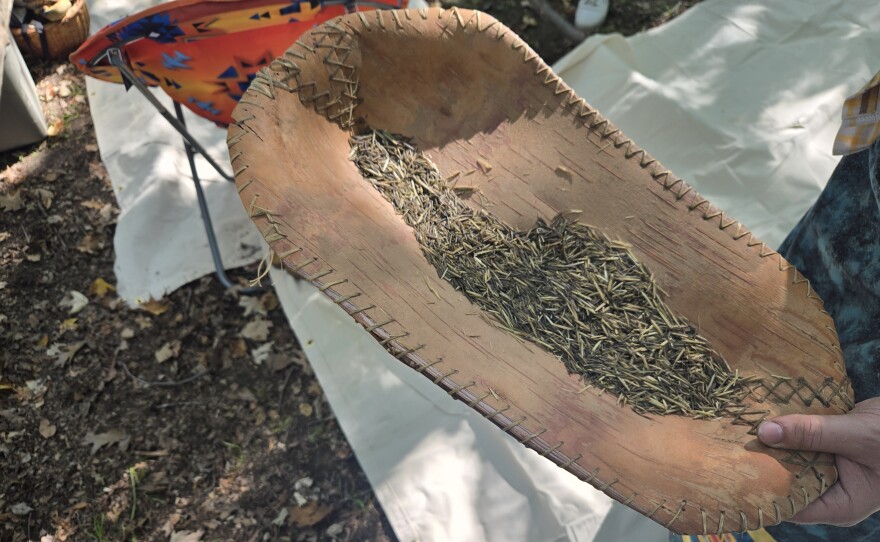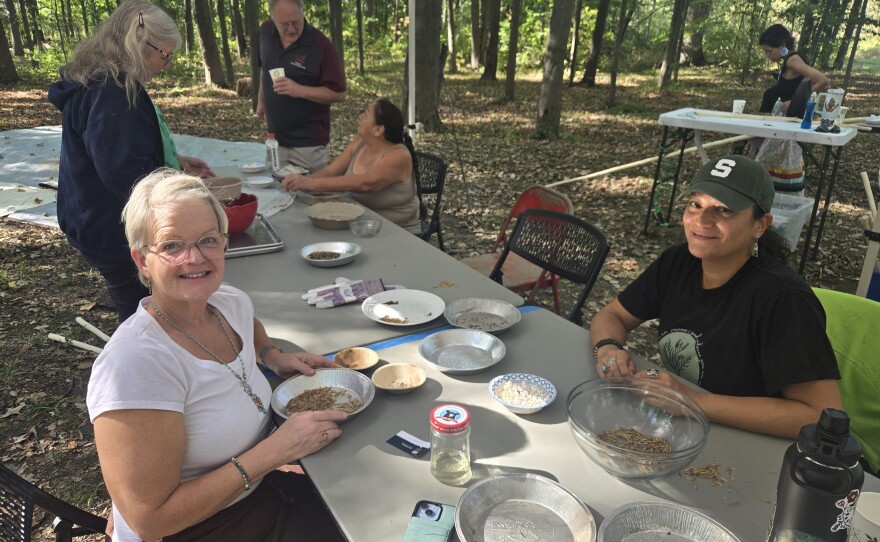Every year as summer ends, Indigenous Michiganders head out onto lakes and rivers to collect wild rice, a staple food with cultural significance to these communities.
Indigenous educator Roger LaBine says a popular spot for harvesting is Lake Tawas in the northern Lower Peninsula, right near the coast of Lake Huron since it's home to one of the largest wild rice beds in the state.
"There are a lot of tribes throughout the state that come and visit this bed because this is one of the ones that is most consistent, most dependable to be able to harvest some rice," he said.
LaBine comes from the Lac Vieux Desert Band of Lake Superior Chippewa Indians in the far western Upper Peninsula, but now he travels the state teaching both Indigenous and non-Indigenous people about manoomin, the Anishinaabemowin word for wild rice.
"This is the plant that allowed us to find our new home here in the Great Lakes basin," LaBine said.
Centuries ago while living on the East Coast, the Anishinaabe were given a prophecy telling them to leave their home and travel west until they found a place where food grew on water. They settled when they found manoomin, growing in lakes and rivers in the upper Midwest.
And at water level, it does feel like you're in the middle of a field of grains, surrounded by thousands of the thin, golden rice stalks.
Harvesting is a two-person job. Out on Lake Tawas, LaBine's educational partner, Cortney Collia of the Sault Ste. Marie Tribe of Chippewa Indians stands and propels the canoe along with a large pole.
"Sometimes that pole will get stuck in the muck, and I've got to kind of rotate it in a circle to pull it out of there so that we don't tip as I reset," she said.
Meanwhile, LaBine uses two, long, carved wooden rods to pull the stalks of rice over the boat, so the grains can fall in.
"The intent is to have only the ripe, more mature ones fall into the boat," he explained.
The ones LaBine is using were passed down to him from his grandmother who taught him how to harvest when he was in his teens.
"We actually also call them knockers, because we're knocking rice into the bottom of the boat," LaBine said.
Manoomin is an annual plant, so the act of harvesting itself helps reseed the lake as LaBine knocks grains not just into the boat but down into the water to grow next year while the pole Collia uses mixes up the sediment below.

At the beginning, there’s just a few dozen grains scattered at LaBine and Collia's feet. After an hour and a half, wild rice carpets the bottom of the canoe.
Several days later, LaBine and Collia go to Mt. Pleasant to the Saginaw Chippewa Indian Tribe to teach how to process wild rice, at what’s known as a rice camp. The event is open to both Indigenous and non-Indigenous community members.
"Roger and I always, as often as we can, if we're going to teach, we're teaching it to everybody, and that's really important to us," Collia explained.
It’s a labor-intensive process involving multiple steps to prepare and preserve the rice for cooking.
"When you start harvesting and processing wild rice, you're going to learn, and you're going to hear a lot of rhythm," he said.

First, the rice is dried on sheets outside for several days and then put into metal tubs to be parched over a fire, so they’re completely free of any moisture.
That rhythm LaBine is talking about comes in as he steadily stirs the grains, making sure they don't burn or pop like popcorn.
After that, the rice is taken to a small pit in the ground covered in canvas. Collia explains that she’ll dance or jig on the grains wearing moccasins to start to loosen the husks.
"Essentially, what I'm doing with my feet is rolling it under my feet. And as I roll it, it will start to kind of sneak out of its shell. It will start to come out," she said.
She twists each heel out, shuffling and sliding back and forth until she can actually start to feel a difference in the grains.
Then the rice is tossed in birch baskets to winnow it, or to remove the actual grain of rice from the chaff.
Finally, people gather at tables to make sure the rice is clean and free from any remaining husks . This is where LaBine says the best gossip is.
"I like just walking around the table and listening what's really going on in my community. I know which cars are parked in which driveway overnight," he joked.
The mood is light-hearted, but these community events are increasingly important, as wild rice faces threats from climate change, invasive species and recreational boats.
In 2023, the governor signed a bill designating wild rice as the state native grain. The law brought more recognition and more awareness around manoomin.
But LaBine calls it just a start. He says there needs to be regulations on what can be marketed and sold as “wild rice” and protections to keep genetically modified rice from wild rice beds.

He has hope though for the restoration and revival of manoomin.
"I'm really optimistic about it, about where it's headed, , and I think there's a very cooperative effort to make sure that it's a reality."
This year, the Michigan Wild Rice Initiative, which is a collaboration between the state and Michigan's 12 federally-recognized tribes put together its first wild rice stewardship guide to document the current work being done and to direct future policy which it comes to manoomin.

